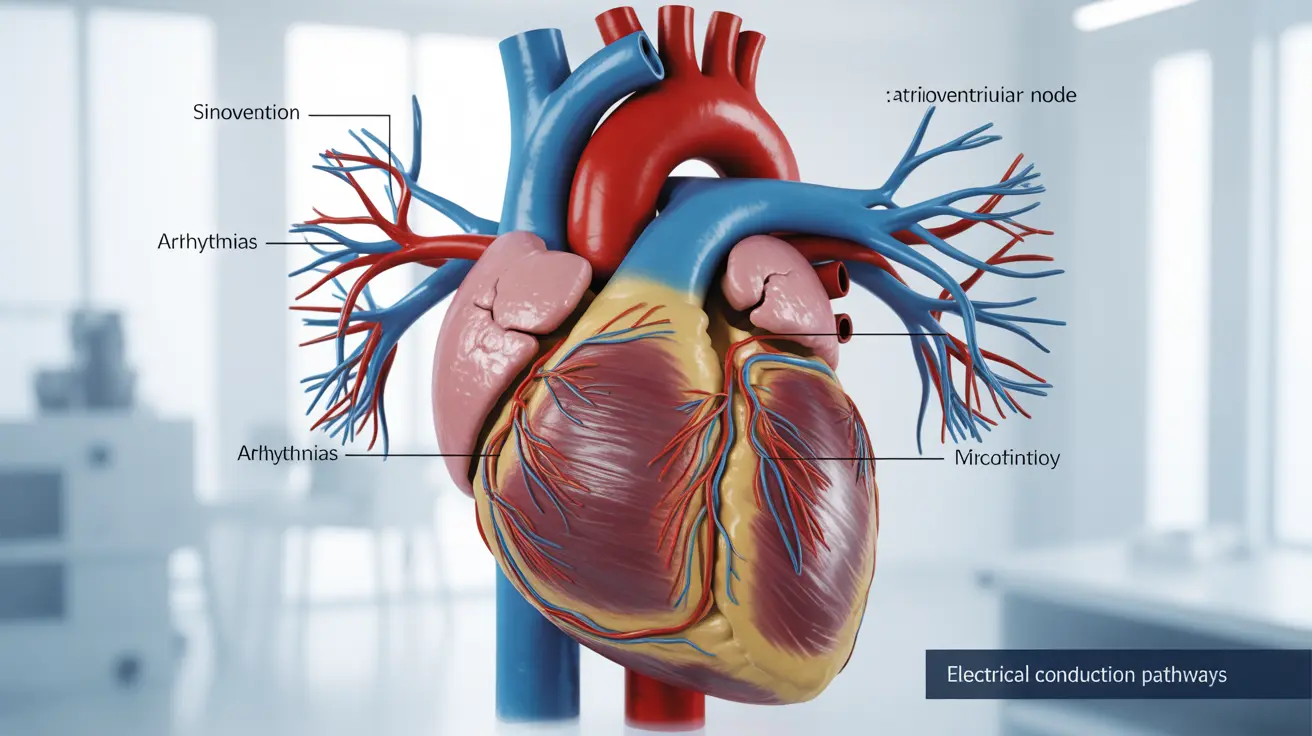An abnormal pulse can be a concerning sign that requires medical attention and understanding. This irregular heart rhythm, also known as an arrhythmia, occurs when the heart beats too fast, too slow, or with an irregular pattern. Understanding the causes, symptoms, and treatment options is crucial for managing this condition effectively.
While some abnormal pulse patterns may be harmless, others can signal serious underlying health conditions that require prompt medical intervention. This guide will help you understand when to seek help and what treatment options are available.
Understanding Abnormal Pulse Patterns
An abnormal pulse manifests in several ways, including tachycardia (rapid heart rate), bradycardia (slow heart rate), or irregular rhythms. These variations can occur due to various factors affecting the heart's electrical system.
Common Types of Abnormal Heart Rhythms
The most frequently encountered irregular heart rhythms include:
- Atrial fibrillation (AFib)
- Supraventricular tachycardia (SVT)
- Premature ventricular contractions (PVCs)
- Heart block
- Ventricular tachycardia
Recognizing Warning Signs
Being aware of symptoms that may indicate an abnormal pulse is crucial for early intervention. Key warning signs include:
- Palpitations or racing heartbeat
- Shortness of breath
- Dizziness or lightheadedness
- Chest pain or discomfort
- Fatigue
- Fainting or near-fainting episodes
Diagnostic Approaches
Healthcare providers use various methods to diagnose and monitor abnormal heart rhythms:
- Electrocardiogram (ECG/EKG)
- Holter monitors
- Event recorders
- Stress tests
- Blood tests to check for underlying conditions
Treatment Strategies
Treatment for an abnormal pulse depends on the underlying cause and severity of symptoms. Options may include:
Medication-Based Treatments
- Antiarrhythmic drugs
- Beta-blockers
- Blood thinners
- Calcium channel blockers
Medical Procedures
- Cardioversion
- Catheter ablation
- Pacemaker implantation
- Implantable cardioverter-defibrillator (ICD)
Lifestyle Modifications for Heart Health
Several lifestyle changes can help manage and prevent abnormal heart rhythms:
- Maintaining a healthy weight
- Regular exercise (as approved by your healthcare provider)
- Stress reduction techniques
- Limiting caffeine and alcohol intake
- Getting adequate sleep
- Following a heart-healthy diet
Frequently Asked Questions
What are the common causes of an abnormal pulse or irregular heart rhythm?
Common causes include heart disease, high blood pressure, structural heart problems, electrolyte imbalances, thyroid disorders, excessive caffeine consumption, stress, and certain medications. Some people may also have genetic predispositions to heart rhythm disorders.
What symptoms should prompt me to seek medical attention for an abnormal heartbeat?
Seek immediate medical attention if you experience severe chest pain, difficulty breathing, fainting, severe dizziness, or sustained rapid heart rate. Also consult your healthcare provider if you notice persistent irregular heartbeats or palpitations, even if they're mild.
How are different types of abnormal heart rhythms diagnosed and monitored?
Diagnosis typically begins with a physical examination and detailed medical history. Healthcare providers use various tools including ECGs, Holter monitors, and event recorders to track heart rhythms. Additional tests like blood work, stress tests, and imaging studies may be necessary to determine underlying causes.
What treatment options are available for managing abnormal pulse or arrhythmias?
Treatment options range from lifestyle modifications to medications and medical procedures. The specific approach depends on the type and severity of the arrhythmia. Options include antiarrhythmic medications, cardioversion, ablation procedures, and implantable devices like pacemakers or defibrillators.
Can lifestyle changes help prevent or reduce the risk of abnormal heart rhythms?
Yes, lifestyle modifications can significantly impact heart rhythm health. Regular exercise, maintaining a healthy weight, reducing stress, limiting alcohol and caffeine intake, and following a heart-healthy diet can help prevent or manage abnormal heart rhythms. It's important to work with your healthcare provider to develop an appropriate lifestyle modification plan.




